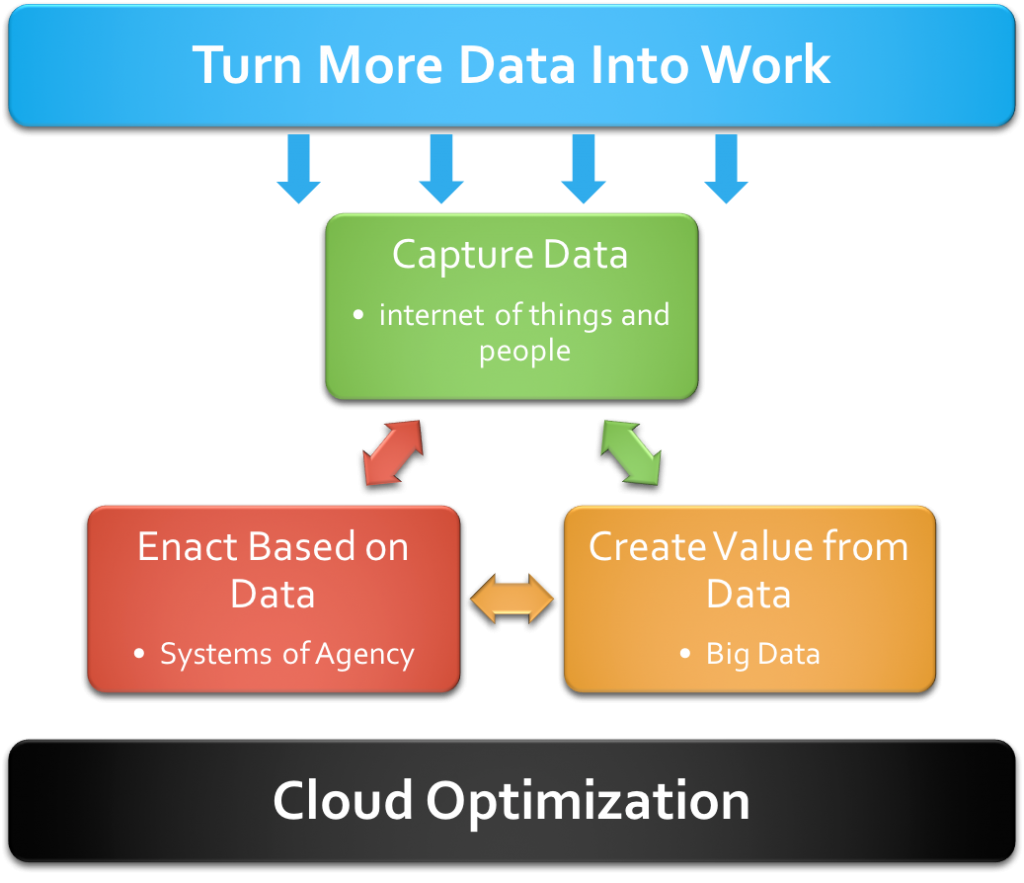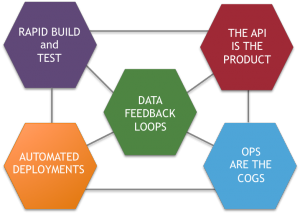Premise: “The purpose of business is to create and keep a customer,” Peter Drucker famously said. So, what is the purpose of digital business? Digital business differentially uses data to create and keep customers. Three core capabilities are required for digital business to work.
Customers want digital engagement because it improves their buying power and offers new sources of value. Businesses have to respond with digital business to keep up with customers and fast-moving competitors. The result: A mishmash of initiatives and investments that are all marketed as “digital,” even if they don’t differentially advance a business’s capacity for providing more engaging value to customers. While these investments, in domains like omnichannel experience, interactive marketing, and digital content, can be very valuable, business leaders must start establishing a clearer path to programmatically enhancing their business with digital capabilities that lead to sustained, differentiated, and transformative customer engagement. Data is the heart of digital business: It ain’t digital if it ain’t data. And that must be the basis for digital business: How do we transform more of our business into data that leads to differentiated market behavior and value propositions? This means that businesses must invest in capabilities for (see Figure 1):
- Creating “free” data and putting it to work. Information is everywhere, but most of it isn’t in a form that is easily captured, stored, processed, and leveraged. Digital businesses are dedicated to turning analog information into digital data that can be put to work in a multitude of applications.
- Turning data into business insights and new operational models. The analog-to-digital transformation is creating unprecedented volumes of data. Big data is programmatically turning that crush of data into business insights, analytic models, and software that shape and power better customer and market engagement — and business results.
- Programming the real world. While still nascent, the tech industry is rushing to develop the science and technology that can turn insights and big data models into real-world actions and results with real business consequences.

Figure 1: Core Digital Business Capabilities
Creating “Free” Data and Putting It To Work
Humans and human institutions operate in an analog world. We capture, measure, and interact through our senses. Using our senses, we engage others and institutions in social settings, coming together to work, play, exchange, and commune. However, analog data tends to exist in highly specific formats that aren’t easily shared and combined. Using a thermodynamics analogy, real world, analog data isn’t “free” and easily applied to work. Note that when we say “free,” we’re not talking about “costless.” Rather, we are observing that information in digital form is liberated from its analog formats and can be applied to getting business things done using digital technologies. Digital business management is impossible without the digital business capabilities required to capture analog data and turning it into “free” data available for work.
The internet of things (IoT) is emerging as the primary means to translate analog into digital. A wide array of sensor technologies, from heat to motion to video, can capture essential analog data and “transduce” it into digital signals. But it’s a special kind of IoT. Why? Because much of the analog data that we want to make free is generated by people, specifically customers. The paybacks of putting sensors on assets, like jet engines, refrigerators, and Barbie dolls, are real and are the basis for new digital, service-based business models. But digital business must also manage digital engagement with people — including interactions between customers and things. After 50 years of turning physical insights into hardware, the tech ecosystem — which includes customers — is now using powerful social tools to turn insights about people and behaviors into advanced software systems for business engagement. These sociological insights are made possible through sensors capable of capturing and communicating human behaviors in phones, cars, toys, apps, and other tools. Thus, the internet of things is better thought of as an internet of things and people (IoT&P).
Turning Data Into Business Insights and New Operational Models
The volumes of data being generated by the IoT&P are free to flow at most times and to most places using digital technologies, but big data capabilities prepare these data for enterprise work. Big data analytics formats free digital data flows into insights and instructions that catalyze human and machine action — including applications, the “machines” of information technology. Increasingly, the output of big data analytics will be digital models capable of better representing the real world with higher, more predictive fidelity than the traditional, highly stylized data models featured in operational applications like ERP.
Two classes of technology are crucial to this process. First, a new array of artificial intelligence technologies (including cognitive computing and machine learning) are able to automatically synthesize streams of data and generate reasonable responses — at least, once they’re set up. Second, a new foundation for flowing data throughout the enterprise, and reliably turning that data into different forms of work, is required for digital business to succeed. Wikibon calls this new foundation the “digital business platform” (DBP; see Figure 2). The DBP is comprised of five classes of capabilities, each dedicated to formatting and applying digital assets to different types of work. The DBP is a digital business foundation, not a new approach to IT.
Figure 2: The Digital Business Platform
Programming the Real World
Data comes in, it’s translated into models for action, and . . . What? Here’s where digital business rubber will (or won’t) meet the real world of business and other human institutions. Digital business is not just about collecting data and flowing it to big data systems that can create insights and models for action, it also is about enacting. Digital business applies data to do stuff: To take concrete actions that have real world consequences that generate real world value. Without interfaces to the real world that can catalyze real action, digital business will be inert. So how will digital business impact the real world?
Digital business enacts through hardware and software actuators that manipulate objects in the physical and social worlds. Actuators can take multiple forms, but we believe business leaders must especially focus on: (1) micro-machines; (2) software bots; (3) virtual reality; (4) programmable compounds (including biological compounds); and (5) most importantly, people. Again, IoT&P is crucial to realizing this aspect of digital business. Through evolving IoT&P investments, and in combination with the DBP, business will have access to a complete cycle of capabilities, from sensing, to making sense, to causing sensation that generates consequential business outcomes.
Action Item: Digital business is not a description of change; it is the change. Business leaders must look beyond technology marketing hype and start establishing concrete plans for programmatically evolving the increasingly crucial role of data in business and customer engagement.


